Protective Effect of EGCG on Hydrogen Peroxide-induced Apoptosis of Human Cardiomyocyte via Regulating miR-16-5p/AOC1 Axis
-
摘要: 目的:探究茶多酚表没食子儿茶素没食子酸酯(EGCG)对过氧化氢(H2O2)诱导人心肌细胞HCM凋亡的保护作用中的分子机制。方法:利用H2O2建立HCM细胞凋亡模型;通过caspase-3活性检测实验评价细胞凋亡水平;利用CCK-8法检测药物的细胞毒性;qPCR和Western blot用于检测含铜胺氧化酶1(AOC1)和miR-16-5p的表达水平;通过细胞转染调控AOC1和miR-16-5p在HCM细胞中的表达;通过TargetScan预测以及双荧光素酶报告基因实验验证miR-16-5p和AOC1 mRNA 3'UTR区的结合关系以及结合位点。结果:EGCG处理后可以显著抑制H2O2诱导的HCM细胞凋亡(P<0.05);在凋亡细胞中,AOC1表达显著下降,EGCG可以显著上调AOC1的表达,而敲减AOC1显著逆转EGCG对凋亡的抑制(P<0.05);同时,在凋亡细胞中,miR-16-5p表达显著上升,EGCG可以显著抑制miR-16-5p的表达,而上调miR-16-5p显著逆转了EGCG对凋亡的抑制(P<0.05);上调miR-16-5p显著逆转了EGCG对凋亡细胞中AOC1表达的促进;最后,miR-16-5p可以靶向抑制AOC1的表达,而过表达AOC1显著逆转了miR-16-5p诱导的HCM细胞凋亡。结论:EGCG通过调控miR-16-5p/AOC1轴发挥了对H2O2诱导HCM细胞凋亡的保护作用,同时提示AOC1是保护心肌细胞损伤治疗的潜在新靶点。Abstract: Objective: To explore the molecular mechanism driving the tea polyphenol epigallocatechin-3-gallate (EGCG)-exerted protective effect on hydrogen peroxide (H2O2)-induced cell apoptosis of human cardiomyocyte HCM cell lines. Methods: HCM cells were stimulated with H2O2 to establish a vitro apoptosis model; the caspase-3 assay was used to assess the cell apoptosis of HCM cells; the CCK-8 assay was used to perform the cytotoxicity experiment; qPCR was used to detect the levels of AOC1 mRNA and miR-16-5p; Western blot was used to detect the protein level of AOC1; cells transfection was conducted to regulate the expression levels of AOC1 and miR-16-5p in HCM cells; TargetScan was used to predict the binding relationship and site between AOC1 mRNA 3’UTR and miR-16-5p, which was verified by the double luciferase reporter gene assay. Results: EGCG could significantly inhibit H2O2-induced apoptosis of HCM cells (P<0.05). In apoptotic cells, the expression of AOC1 was significantly decreased, and EGCG could significantly up-regulate the expression of AOC1, while knocking down AOC1 could significantly reverse the inhibition of EGCG on apoptosis (P<0.05). Meanwhile, the expression of miR-16-5p was significantly increased in apoptotic cells, and EGCG could significantly inhibit the expression of miR-16-5p, while up-regulation of miR-16-5p significantly reversed the inhibition of EGCG on apoptosis (P<0.05). Upregulation of miR-16-5p significantly reversed the promotion of AOC1 expression by EGCG in apoptotic cells. Finally, miR-16-5p can target inhibit the expression of AOC1, while over expression of AOC1 significantly reversed miR-16-5p-induced apoptosis of HCM cells. Conclusion: EGCG protected H2O2-induced apoptosis of HCM cells by regulating the miR-16-5p/AOC1 axis, which proposes AOC1 as a potential novel therapeutic target pro-tection against cardiomyocyte injury.
-
Keywords:
- epigallocatechin-3-gallate /
- human cardiomyocyte /
- miR-16-5p /
- AOC1 /
- cell apoptosis /
- H2O2
-
表没食子儿茶素没食子酸酯(Epigallocatechin gallate,EGCG)是存在于茶多酚中的一种儿茶素单体,其含量较高、生理活性较强、存在较广泛。研究表明,EGCG具有多种重要的生物学功能,包括抗氧化、抗肿瘤、神经保护、抗疲劳等[1]。其中,EGCG保护细胞凋亡的作用受到研究者的广泛关注,但具体分子机制尚不明确。细胞凋亡是一种为保持机体内环境稳态平衡而产生的细胞程序性死亡行为,受到环境刺激、基因调控等多种因素影响[2]。已知微小RNA(micro RNA,miRNA)在细胞凋亡的调控过程中发挥重要作用。
miRNA是一类长约22 nt的、分布广泛的短链非编码RNA分子,其于细胞核内转录形成,前体miRNA经Drosha酶作用后去除5’帽子结构和3’ polyA尾巴,仅保留茎环结构,出核后经Dicer酶进一步加工剪切,成为成熟miRNA[3]。动物细胞中的miRNA可以与下游靶基因mRNA的3’非编码区结合,直接降解或抑制mRNA的翻译从而影响其蛋白表达[4]。研究表明,miRNA与多种疾病的生物学行为具有密切联系[5]。已有研究报道EGCG可以抑制胰腺β细胞中miR-16-5p的表达,而miR-16-5p的高表达可以促进人心肌细胞的凋亡,然而其具体机制仍待探究[6]。
含铜胺氧化酶1(Amine Oxidase Copper Con-taining 1,AOC1)是一种分泌型蛋白,具有催化腐胺、组胺等化合物降解的作用,它们与机体的免疫反应、肿瘤形成等过程密切相关[7]。有研究发现AOC1可以调控肿瘤细胞的凋亡,但尚无其在人心肌细胞中作用的相关报道[8]。为探究EGCG在抑制心肌细胞凋亡过程中的具体作用机制,本文将展开具体研究。
本研究用H2O2诱导法构建了人源心肌细胞凋亡模型,在此模型中验证EGCG对心机细胞凋亡的保护作用,并进一步探究AOC1和miR-16-5p在这一过程中的调控作用以及miR-16-5p与AOC1之间的调控关系和机制,并进一步对EGCG是否通过调控miR-16-5p/AOC1轴对心肌细胞凋亡发挥保护作用进行验证。这一研究不但在分子水平阐述了EGCG作为重要的食源性功能因子发挥机体保护功能的关键作用机制,为EGCG在临床中防治心肌细胞凋亡引起的相关疾病的应用提供理论基础,也为保护心肌细胞损伤的治疗提供了潜在的新靶点。
1. 材料与方法
1.1 材料与仪器
EGCG(纯度98%) 上海源叶公司;人心肌细胞(Human Cardiac Myocytes,HCM) 北京北纳生物公司;miR-16-5p-mimic、Control-mimic、AOC1-siRNA、Control-siRNA、AOC1质粒等基因 上海生工公司;引物合成 吉林库美公司;DMEM培养基、胎牛血清(FBS)、胰酶-EDTA(0.25%)Hyclone、双抗Gibco、转染试剂Lipofectamine™ 3000、Enz-ChekR Caspase 3活性/凋亡检测试剂盒、TRIzol、miRNA基因表达检测试剂盒 Thermo Fisher公司;H2O2 Sigma公司;CCK-8试剂盒 碧云天公司;氯仿、异丙醇 北京化工;DEPC 上海生工;用于mRNA基因表达检测试剂盒 全式金公司; Luciferase报告基因检测试剂盒和相关载体 广州复能公司;ECL显影剂、蛋白提取用细胞裂解液 碧云天;AOC1一抗 Novus Biologicals;β-actin一抗 Proteintech、兔二抗 Proteintech 武汉三英生物技术有限公司。
BB 150CO2培养箱、MK3酶标仪 Thermo Fisher公司。
1.2 实验方法
1.2.1 细胞培养与转染
HCM细胞为贴壁生长,使用含10% FBS和1%双抗的DMEM培养基在37 ℃、5%浓度的二氧化碳培养箱中进行培养,当细胞生长状态良好、融合度达80%~90%时,每cm2的培养面积加入50 μL胰酶消化,按照后续实验需要的细胞数量进行传代。用于瞬时转染实验的细胞传代时密度调整为1×105 个/孔,接种于6孔板中,转染操作参照转染试剂说明书,每组实验设置相应的对照组和实验组,其中对照组为正常HCM细胞转染Control-siRNA,实验组为H2O2诱导后HCM细胞转染AOC1-siRNA,H2O2诱导后培养基中添加EGCG培养的HCM细胞转染AOC1-siRNA,H2O2诱导后培养基中添加EGCG培养的HCM细胞转染Control-siRNA,转染48 h后收集细胞进行后续实验。
1.2.2 H2O2诱导细胞凋亡模型建立与凋亡检测
HCM细胞状态生长良好时接种至6孔板,24 h贴壁后,用培养基将H2O2稀释至浓度为50 µmol/L,弃掉细胞培养基,加入H2O2稀释液,12 h后更换含FBS的正常培养基。取出部分H2O2诱导后的HCM细胞加入10 µg/mL EGCG和正常培养基接种至6孔板继续培养。细胞凋亡检测参照试剂盒说明书操作,收集待检测的细胞,洗涤后加入相应体积的裂解液,收集上清后转移至微孔板中,上机检测,根据荧光数值计算Caspase-3活性,以此鉴定细胞凋亡程度。
1.2.3 细胞毒性检测
应用CCK-8法进行细胞毒性检测,用于检测的细胞传代时接种至96孔板,每孔细胞数量为2×104个,待细胞完全贴壁,各组根据实验需求各加入50 µmol/L H2O2和10 µg/mL EGCG,24 h后,每孔加入10 μL CCK-8溶液,细胞培养箱孵育2 h,用酶标仪在450 nm波长下检测吸光度,计算细胞存活率。
1.2.4 qPCR检测
收集对照组(正常HCM细胞)和实验组(H2O2诱导后的HCM细胞,H2O2诱导后在培养基添加EGCG培养的HCM细胞)用于检测基因表达的细胞,该细胞中分别转染实验需要的基因,miR-16-5p、U6、AOC1以及ACTB。根据细胞数量加入相应体积的TRIzol,裂解细胞后加入异丙醇和氯仿,全程在冰上操作完成总RNA提取。参照说明书条件,利用两种不同的试剂盒分别将mRNA和miRNA逆转录成cDNA,再分别利用相应SYBR GREEN试剂盒对mRNA和miRNA的表达进行检测。ACTB和U6分别用作mRNA和miRNA的内参基因,引物序列见表1,基因的相对表达量计算采用2−ΔΔCT法。
表 1 引物序列Table 1. Primer sequence上游序列 (5'→3') 下游序列 (5'→3') miR-16-5p CTTAAGAACCCTCCTTACTC AAGCTACCCTAGGGGAAGGA U6 GCTTCGGCAGCACATATACTAAAAT CGCTTCAGAATTTGCGTGTCAT AOC1 CGGCCTTCCGCTTCAAAA TGCTCAAAGACCACGGGC ACTB CTCCATCCTGGCCTCGCTGT GCTGTCACCTTCACCGTTCC 1.2.5 Western blot检测
收集用于蛋白表达检测的细胞,根据细胞数量加入相应体积的细胞裂解液,煮沸裂解细胞后,用BCA试剂盒检测蛋白浓度。取适量蛋白进行SDS-PAGE电泳,待上样缓冲液中的溴酚蓝指示剂移动至凝胶底部时终止电泳。通过湿转法将凝胶上的蛋白转移至PVDF膜上,用5%BSA封闭液室温下处理1 h,分别用ACO1一抗和内参抗体对相应蛋白进行孵育,室温处理1 h,洗膜后再孵育二抗,最后用ECL法曝光显影,利用ImageJ软件进行灰度值计算。
1.2.6 Luciferase报告基因检测
用于报告基因检测的细胞进行传代时接种至6孔板,24 h后分别共转Control-mimic、miR-16-5p-mimic与Control-LUC、AOC1-3’ UTR-WT-LUC、AOC1-3’ UTR-MUT-LUC。转染48 h后收集细胞,参照检测试剂盒说明书要求,首先向洗涤后的细胞沉淀中加入相应体积的裂解液,室温摇动15 min,离心取上清转移至微孔板中,加入孵育好的萤火虫荧光素酶工作液,温和混匀,上机进行检测;取出微孔板,再加入海肾荧光素酶工作液,混匀后再次上机检测。计算相对荧光素酶活性。
1.3 数据处理
利用Prism7.0软件统计分析模块对所有实验结果进行统计学相关分析,实验数据用均数±标准差表示,两组间差异通过t检验进行比较分析,P<0.05表示差异具有统计学意义。
2. 结果与分析
2.1 EGCG对H2O2诱导HCM细胞凋亡的影响
为验证EGCG对H2O2诱导的HCM细胞凋亡的作用,本研究通过caspase-3活性检测实验评价细胞凋亡水平。如图1A所示,加入H2O2处理后,HCM细胞的凋亡水平极显著上升(P<0.01),确认人心肌细胞凋亡模型建立;而加入EGCG可以显著抑制细胞凋亡水平(P<0.01),这验证了其对HCM细胞凋亡的保护作用;而在正常HCM细胞中,EGCG没有显著影响细胞凋亡水平(P>0.05)。同时,为了验证EGCG对HCM细胞的毒性作用,本研究采用CCK-8法进行了细胞毒性实验。如图1B所示,在正常细胞中,EGCG对细胞存活率没有显著影响(P>0.05),这说明其在本研究中的应用浓度下对HCM细胞没有毒性作用;此外,EGCG极显著逆转了H2O2对细胞存活率的抑制(P<0.01),这说明EGCG可以保护H2O2对HCM细胞的毒性作用。综合以上数据证明,EGCG可以保护H2O2诱导的HCM细胞凋亡。
2.2 AOC1在EGCG凋亡保护过程中发挥的作用
本研究进一步对AOC1在EGCG对凋亡模型的调控中的作用进行了探究。首先,在凋亡细胞中AOC1的表达显著下降(P<0.05,图2A、图2B),而EGCG可以极显著上调这种抑制,EGCG使AOC1表达极显著上调( P<0.01,图2C、图2D)。然后,本研究通过与对照组转染Control-siRNA比较发现,转染AOC1-siRNA能敲减AOC1的表达(图2E,P<0.01;图2F和2G, P<0.01),同时在EGCG培养的细胞中转染siRNA后发现,在EGCG发挥的细胞凋亡起到保护的作用。通过细胞凋亡检测实验发现,在正常HCM细胞中,敲减AOC1可以显著提高细胞凋亡的水平(图2H,P<0.01)。进一步的研究发现,敲减AOC1可以明显逆转EGCG对细胞凋亡的抑制(图2I,P<0.01)。综合以上数据证明,EGCG可以通过上调被抑制的AOC1来保护H2O2诱导的HCM细胞凋亡。
![]() 图 2 ECGC通过抑制AOC1对H2O2诱导的HCM细胞凋亡的影响注:A:通过qPCR检测对照组和凋亡组细胞中AOC1的表达;B:通过Western blot检测对照组和凋亡组细胞中AOC1的表达;C:通过qPCR检测EGCG对凋亡细胞中AOC1表达;D:通过Western blot检测EGCG对凋亡细胞中AOC1表达;E:通过qPCR检测对照组和凋亡组细胞中转染siRNA的表达;F:通过Western blot检测对照组和凋亡组细胞中转染siRNA的表达;G:通过qPCR检测对照组和凋亡细胞中转染siRNA对AOC1表达;H:通过caspase-3活性检测对照组和凋亡细胞中敲减AOC1对HCM细胞凋亡的影响;I:通过caspase-3活性检测对照组和凋亡细胞中敲减AOC1对EGCG的保护凋亡作用的影响。Figure 2. Effect on EGCG protects HCM cells from H2O2-induced apoptosis by inhibition of AOC1
图 2 ECGC通过抑制AOC1对H2O2诱导的HCM细胞凋亡的影响注:A:通过qPCR检测对照组和凋亡组细胞中AOC1的表达;B:通过Western blot检测对照组和凋亡组细胞中AOC1的表达;C:通过qPCR检测EGCG对凋亡细胞中AOC1表达;D:通过Western blot检测EGCG对凋亡细胞中AOC1表达;E:通过qPCR检测对照组和凋亡组细胞中转染siRNA的表达;F:通过Western blot检测对照组和凋亡组细胞中转染siRNA的表达;G:通过qPCR检测对照组和凋亡细胞中转染siRNA对AOC1表达;H:通过caspase-3活性检测对照组和凋亡细胞中敲减AOC1对HCM细胞凋亡的影响;I:通过caspase-3活性检测对照组和凋亡细胞中敲减AOC1对EGCG的保护凋亡作用的影响。Figure 2. Effect on EGCG protects HCM cells from H2O2-induced apoptosis by inhibition of AOC12.3 miR-16-5p在EGCG凋亡保护过程中发挥的作用
探究AOC1作用的同时,本研究对miR-16-5p在EGCG保护HCM细胞凋亡作用中的机制进行了验证。首先,如图3A所示,在H2O2诱导的HCM细胞中,miR-16-5p的表达显著上调(P<0.01),而EGCG可以明显抑制这种上调(P<0.05)。然后本研究通过转染miRNA-mimic 上调miR-16-5p的表达(P<0.01)来验证其在EGCG发挥的HCM细胞凋亡保护中的作用。在细胞凋亡检测实验中,如图3B所示,在正常细胞中,上调miR-16-5p的表达明显促进了细胞的凋亡(P<0.01),而且上调miR-16-5p可以明显逆转EGCG对细胞凋亡的抑制(P<0.01)。综合以上数据证明,EGCG可以通过抑制被上调的miR-16-5p来保护H2O2诱导的HCM细胞凋亡。
![]() 图 3 EGCG通过抑制被上调的miR-16-5p对H2O2诱导的HCM细胞凋亡的影响注:A:通过qPCR检测凋亡细胞中miR-16-5p的表达、检测EGCG对凋亡细胞中miR-16-5p表达的调控以及转染mimic对miR-16-5p表达的水平。B:通过caspase-3活性检测实验上调miR-16-5p对HCM细胞凋亡的影响以及上调miR-16-5p对EGCG的保护凋亡作用的影响。Figure 3. EGCG inhibites the effect on HCM cells from H2O2-induced apoptosis by inhibiting the up-regulated miR-16-5p
图 3 EGCG通过抑制被上调的miR-16-5p对H2O2诱导的HCM细胞凋亡的影响注:A:通过qPCR检测凋亡细胞中miR-16-5p的表达、检测EGCG对凋亡细胞中miR-16-5p表达的调控以及转染mimic对miR-16-5p表达的水平。B:通过caspase-3活性检测实验上调miR-16-5p对HCM细胞凋亡的影响以及上调miR-16-5p对EGCG的保护凋亡作用的影响。Figure 3. EGCG inhibites the effect on HCM cells from H2O2-induced apoptosis by inhibiting the up-regulated miR-16-5p2.4 EGCG、miR-16-5p和AOC1在凋亡过程中的调控关系
通过上述实验发现,miR-16-5p 和AOC1都参与了EGCG对H2O2诱导HCM细胞凋亡的保护作用。为了进一步验证三者之间的调控关系,本研究对EGCG处理的凋亡模型进行上调miR-16-5p的干预,由图4可知,上调miR-16-5p显著抑制了EGCG对于AOC1表达的提高(P<0.01),证明EGCG通过抑制miR-16-5p上调了AOC1的表达。
2.5 miR-16-5p和AOC1在凋亡过程中的调控关系和机制
在明确EGCG对miR-16-5p和AOC1的调控关系后,本研究进一步对miR-16-5p和AOC1之间的调控关系和机制进行验证。如图5所示,首先,在HCM细胞中上调miR-16-5p极显著抑制了AOC1的表达(P<0.01)。而通过TargetScan的预测显示miR-16-5p和AOC1 mRNA的3'UTR区可能存在结合关系。应用双荧光素报告基因实验验证两者的结合作用,根据TargetScan预测AOC1的3'UTR区上潜在的miR-16-5p结合位点,设计相应片段的突变,将Control-LUC、AOC1-3’ UTR-WT-LUC、AOC1-3’ UTR-MUT-LUC分别与Control-mimic和miR-16-5p-mimic共同转染。结果显示,与野生型(Luc-Wt) 相比,突变型(Luc-Mut)与miR-16-5p-mimic共同转染后不影响荧光素表达,说明突变后使AOC1的3'UTR区上的特定片段丧失了与miR-16-5p的结合作用(图5D和图5E),这说明在HCM细胞中miR-16-5p可以靶向抑制AOC1的表达。然后本研究通过转染过表达质粒,上调AOC1的表达(P<0.01,图5F、图5G)来验证 AOC1在miR-16-5p调控的细胞凋亡中的作用。在细胞凋亡检测实验中,上调AOC1的表达,可以明显逆转上调miR-16-5p所导致的HCM细胞凋亡水平上升(P<0.01)。综合以上数据证明,miR-16-5p通过靶向抑制AOC1的表达调控了HCM细胞的凋亡。
![]() 图 5 miR-16-5p通过靶向调控AOC1对HCM细胞的凋亡的影响注:A:通过qPCR检测miR-16-5p对AOC1表达的调控;B:通过和Western blot检测miR-16-5p对AOC1表达的调控;C:通过qPCR检测miR-16-5p对AOC1表达的调控;D:AOC1 mRNA 3'UTR区特定片段野生型和突变型与miR-16-5p的序列比对;E:通过双荧光素报告基因实验对miR-16-5p与AOC1 mRNA 3'UTR区的结合情况;F:通过qPCR和Western blot验证转染AOC1过表达质粒对AOC1表达的上调情况;G:通过western blot验证转染AOC1过表达质粒对AOC1表达的上调情况;H:通过caspase-3活性检测实验评价上调AOC1对miR-16-5p促凋亡作用的影响。Figure 5. miR-16-5p regulates the apoptosis of HCM cells by targeting AOC1
图 5 miR-16-5p通过靶向调控AOC1对HCM细胞的凋亡的影响注:A:通过qPCR检测miR-16-5p对AOC1表达的调控;B:通过和Western blot检测miR-16-5p对AOC1表达的调控;C:通过qPCR检测miR-16-5p对AOC1表达的调控;D:AOC1 mRNA 3'UTR区特定片段野生型和突变型与miR-16-5p的序列比对;E:通过双荧光素报告基因实验对miR-16-5p与AOC1 mRNA 3'UTR区的结合情况;F:通过qPCR和Western blot验证转染AOC1过表达质粒对AOC1表达的上调情况;G:通过western blot验证转染AOC1过表达质粒对AOC1表达的上调情况;H:通过caspase-3活性检测实验评价上调AOC1对miR-16-5p促凋亡作用的影响。Figure 5. miR-16-5p regulates the apoptosis of HCM cells by targeting AOC13. 讨论
凋亡是一个受到高度调控的程序性细胞死亡的过程,膜表面的死亡受体接受外界刺激后激活Caspase家族的启动因子和效应因子进而介导凋亡形成,是其重要机制之一[9-10]。凋亡广泛参与了肿瘤形成、疾病发生、微生物感染等各类进程,心肌细胞凋亡在心脏相关病理过程中发挥重要作用,有研究表明,长时间的剧烈运动产生的疲劳可以引起心肌细胞发生凋亡,如何有效的抑制细胞凋亡的发生是保护心脏的关键[11-13]。本研究证明,miR-16-5p/AOC1轴参与调控了EGCG对人心肌细胞凋亡的保护过程。
EGCG存在于绿茶等植物中,是一种酯类儿茶素,后者是茶多酚的主要成分[1]。研究表明,EGCG具有广泛的生物学活性,包括突出的抗氧化性,对多种肿瘤细胞表现出抵抗作用,以及显著的神经保护功能等,并且在茶多酚抗疲劳的过程中EGCG发挥关键的作用[14-16]。虽然EGCG在乳腺癌、慢性淋巴细胞白血病、肝癌等肿瘤中具有诱导细胞凋亡的表现,通过这一途径发挥抗肿瘤功能;但是对于H2O2诱导产生的细胞凋亡,EGCG通过不同的机制表现出明显的抑制作用[17-19]。Tang[20]等发现EGCG通过层黏连蛋白受体抑制H2O2诱导的小鼠血管平滑肌细胞凋亡,从而降低心血管疾病的发病风险。Sheng等[21]研究表明EGCG通过调控p53和Bcl-2的表达进而抑制小鼠心肌细胞凋亡。Khurana等[22]动物实验数据阐述了EGCG通过降低氧化应激水平来维持心肌细胞生理能力。本研究发现EGCG通过调控miR-16-5p/AOC1轴发挥对人心肌细胞的保护作用。
AOC家族是一类负责催化伯胺脱氨基作用的酶蛋白,在机体内主要发挥清除多胺的作用,机体内的多胺水平超出一定范围将会导致细胞生长收到抑制或者凋亡,因此AOC1可能通过调节多胺的内稳态而成为病理或者生理过程中的影响因子[23-24]。本研究发现AOC1在H2O2诱导处理的心肌细胞中表达降低,并且促进心肌细胞凋亡,同时作为靶基因受到上游miR-16-5p的分子调控,这与AOC1在肿瘤细胞中的表现一致。Xu等[23]研究表明敲减AOC1可以通过抑制AKT通路促进人胃癌细胞凋亡;Liu等[25]提供的临床数据显示AOC1高表达与人结肠癌发生呈正相关,敲减AOC1表达可以抑制人结肠癌细胞的分化与迁移。此外,本研究发现EGCG通过上调AOC1的表达发挥了保护细胞凋亡的作用,而AOC1调控心肌细胞凋亡的具体机制尚不明确,可能与清除多胺相关,这有待进一步的研究验证。
已知miRNA通过结合靶基因参与机体多种疾病发生,与多种组织或器官的生理、病理变化密切相关[26]。有临床数据表明,利用芯片检测发现血液样本中的miR-16-5p在奥地利缺血性心脏病人群中高表达,这与Kuosmanen等[27]报道的欧洲心力衰竭患者心包积液样本中miR-16-5p表达上调的结果相一致,说明miR-16-5p的高表达与心脏疾病相关[28]。多项研究表明,miR-16-5p可以通过调控细胞凋亡来影响疾病的进展。本研究发现高表达的miR-16-5p促进心肌细胞凋亡,这与Cao等[29]的研究一致,后者发现抑制miR-16-5p表达可以通过调控靶基因蛋白酪氨酸磷酸酶非受体4型来降低缺氧/复氧诱导产生的人心肌细胞系凋亡。然而,安玉成等[30]研究发现miR-16-5p过表达可以通过靶向下调硫氧还蛋白相互作用蛋白抑制脂多糖诱导的心肌细胞凋亡。安玉成研究中使用H9C2心肌细胞做为研究对象,与本研究采用的HCM细胞的种属不同;且前者的研究利用脂多糖诱导凋亡模型,与本研究采用的H2O2诱导法存在差异,这些实验因素可能导致两个研究中miR-16-5p在心肌细胞凋亡过程中的表达趋势不同。此外,本研究证明了miR-16-5p可以通过靶向抑制AOC1调控人心肌细胞凋亡,本研究推测这种调控关系可能也发生在其他疾病中,这为相关领域的研究提供了线索。
总之,本研究通过研究发现,EGCG通过调控被抑制的AOC1和被上调的miR-16-5p对H2O2诱导的人心肌细胞凋亡发挥保护作用,其具体机制为EGCG通过抑制miR-16-5p上调了AOC1的表达,并且miR-16-5p通过靶向抑制AOC1的表达调控了HCM细胞的凋亡(图6,用biorender.com制作)。这一研究阐述了EGCG通过调控miR-16-5p/AOC1轴发挥了对H2O2诱导HCM细胞凋亡的保护作用及具体机制,同时提示AOC1是保护心肌细胞损伤治疗的潜在新靶点。
4. 结论
综上所述,本文初步阐述EGCG、AOC1和miR-16-5p之间的分子机制关系,本研究发现EGCG可以明显改善细胞凋亡,保护H2O2诱导的HCM细胞凋亡,能通过上调抑制的AOC1减少细胞凋亡,抑制被上调的miR-16-5p减少HCM细胞凋亡,同时抑制miR-16-5p能够靶向上调AOC1的表达,减少HCM细胞的凋亡。本研究通过实验发现EGCG通过调控miR-16-5p/AOC1轴发挥了对H2O2诱导HCM细胞凋亡的保护作用,同时提示AOC1是保护心肌细胞损伤治疗的潜在新靶点,为日后治疗心肌细胞损伤提供帮助,为人类健康做出贡献。
-
图 2 ECGC通过抑制AOC1对H2O2诱导的HCM细胞凋亡的影响
注:A:通过qPCR检测对照组和凋亡组细胞中AOC1的表达;B:通过Western blot检测对照组和凋亡组细胞中AOC1的表达;C:通过qPCR检测EGCG对凋亡细胞中AOC1表达;D:通过Western blot检测EGCG对凋亡细胞中AOC1表达;E:通过qPCR检测对照组和凋亡组细胞中转染siRNA的表达;F:通过Western blot检测对照组和凋亡组细胞中转染siRNA的表达;G:通过qPCR检测对照组和凋亡细胞中转染siRNA对AOC1表达;H:通过caspase-3活性检测对照组和凋亡细胞中敲减AOC1对HCM细胞凋亡的影响;I:通过caspase-3活性检测对照组和凋亡细胞中敲减AOC1对EGCG的保护凋亡作用的影响。
Figure 2. Effect on EGCG protects HCM cells from H2O2-induced apoptosis by inhibition of AOC1
图 3 EGCG通过抑制被上调的miR-16-5p对H2O2诱导的HCM细胞凋亡的影响
注:A:通过qPCR检测凋亡细胞中miR-16-5p的表达、检测EGCG对凋亡细胞中miR-16-5p表达的调控以及转染mimic对miR-16-5p表达的水平。B:通过caspase-3活性检测实验上调miR-16-5p对HCM细胞凋亡的影响以及上调miR-16-5p对EGCG的保护凋亡作用的影响。
Figure 3. EGCG inhibites the effect on HCM cells from H2O2-induced apoptosis by inhibiting the up-regulated miR-16-5p
图 5 miR-16-5p通过靶向调控AOC1对HCM细胞的凋亡的影响
注:A:通过qPCR检测miR-16-5p对AOC1表达的调控;B:通过和Western blot检测miR-16-5p对AOC1表达的调控;C:通过qPCR检测miR-16-5p对AOC1表达的调控;D:AOC1 mRNA 3'UTR区特定片段野生型和突变型与miR-16-5p的序列比对;E:通过双荧光素报告基因实验对miR-16-5p与AOC1 mRNA 3'UTR区的结合情况;F:通过qPCR和Western blot验证转染AOC1过表达质粒对AOC1表达的上调情况;G:通过western blot验证转染AOC1过表达质粒对AOC1表达的上调情况;H:通过caspase-3活性检测实验评价上调AOC1对miR-16-5p促凋亡作用的影响。
Figure 5. miR-16-5p regulates the apoptosis of HCM cells by targeting AOC1
表 1 引物序列
Table 1 Primer sequence
上游序列 (5'→3') 下游序列 (5'→3') miR-16-5p CTTAAGAACCCTCCTTACTC AAGCTACCCTAGGGGAAGGA U6 GCTTCGGCAGCACATATACTAAAAT CGCTTCAGAATTTGCGTGTCAT AOC1 CGGCCTTCCGCTTCAAAA TGCTCAAAGACCACGGGC ACTB CTCCATCCTGGCCTCGCTGT GCTGTCACCTTCACCGTTCC -
[1] ALMATROODI S A, ALMATROUDI A, KHAN A A, et al. Potential therapeutic targets of epigallocatechin gallate (EGCG), the most abundant catechin in green tea, and its role in the therapy of various types of cancer[J]. Molecules,2020,25(14):3146. doi: 10.3390/molecules25143146
[2] NAGATA S. Apoptosis and clearance of apoptotic cells[J]. Annu Rev Immunol,2018,36:489−517. doi: 10.1146/annurev-immunol-042617-053010
[3] O'BRIEN J, HAYDER H, ZAYED Y, et al. Overview of MicroRNA biogenesis, mechanisms of actions, and circulation[J]. Front Endocrinol (Lausanne),2018,9:402. doi: 10.3389/fendo.2018.00402
[4] RUPAIMOOLE R, SLACK F J. MicroRNA therapeutics: Towards a new era for the management of cancer and other diseases[J]. Nat Rev Drug Discov,2017,16(3):203−222. doi: 10.1038/nrd.2016.246
[5] ARDEKANI A M, NAEINI M M. The role of microRNAs in human diseases[J]. Avicenna J Med Biotechnol,2010,2(4):161−79.
[6] LIU H, WANG L, LI F, et al. The synergistic protection of EGCG and quercetin against streptozotocin (STZ)-induced NIT-1 pancreatic β cell damage via upregulation of BCL-2 expression by miR-16-5p[J]. J Nutr Biochem,2021,96:108748. doi: 10.1016/j.jnutbio.2021.108748
[7] KIRSCHNER K M, BRAUN J F, JACOBI C L, et al. Amine oxidase copper-containing 1 (AOC1) is a downstream target gene of the Wilms tumor protein, WT1, during kidney development[J]. J Biol Chem,2014,289(35):24452−24462. doi: 10.1074/jbc.M114.564336
[8] SUN W Y, CHOI J, CHA Y J, et al. Evaluation of the expression of amine oxidase proteins in breast cancer[J]. Int J Mol Sci,2017,18(12):2775. doi: 10.3390/ijms18122775
[9] LI J, YUAN J. Caspases in apoptosis and beyond[J]. Oncogene,2008,27(48):6194−6206. doi: 10.1038/onc.2008.297
[10] MCCOMB S, CHAN P K, GUINOT A, et al. Efficient apoptosis requires feedback amplification of upstream apoptotic signals by effector caspase-3 or -7[J]. Sci Adv,2019,5(7):eaau9433. doi: 10.1126/sciadv.aau9433
[11] BELL R, ROBLES-HARRIS M A, ANDERSON M, et al. Inhibition of apoptosis exacerbates fatigue-damage tendon injuries in an in vivo rat model[J]. Eur Cell Mater,2018,36:44−56. doi: 10.22203/eCM.v036a04
[12] MARQUES-ALEIXO I, SANTOS-ALVES E, OLIVEIRA P J, et al. The beneficial role of exercise in mitigating doxorubicin-induced mitochondrionopathy[J]. Biochim Biophys Acta Rev Cancer,2018,1869(2):189−199. doi: 10.1016/j.bbcan.2018.01.002
[13] DU S P, ROEDERER G, DUFOUR R. Myotoxicity of statins: Mechanism of action[J]. Pharmacol Ther,2017,175:1−16. doi: 10.1016/j.pharmthera.2017.02.029
[14] NEGRI A, NAPONELLI V, RIZZI F, et al. Molecular targets of epigallocatechin-gallate (EGCG): A special focus on signal transduction and cancer[J]. Nutrients,2018,10(12):1936. doi: 10.3390/nu10121936
[15] ZHANG X, WANG J, HU J M, et al. Synthesis and biological testing of novel glucosylated epigallocatechin gallate (EGCG) derivatives[J]. Molecules,2016,21(5):620. doi: 10.3390/molecules21050620
[16] LORENZ M, RAUHUT F, HOFER C, et al. Tea-induced improvement of endothelial function in humans: No role for epigallocatechin gallate (EGCG)[J]. Scientific Reports,2017,7:2279. doi: 10.1038/s41598-017-02384-x
[17] KHIEWKAMROP P, PHUNSOMBOON P, RICHERT L, et al. Epistructured catechins, EGCG and EC facilitate apoptosis induction through targeting de novo lipogenesis pathway in HepG2 cells[J]. Cancer Cell Int,2018,18:46. doi: 10.1186/s12935-018-0539-6
[18] HUANG C Y, HAN Z, LI X, et al. Mechanism of EGCG promoting apoptosis of MCF-7 cell line in human breast cancer[J]. Oncol Lett,2017,14(3):3623−3627. doi: 10.3892/ol.2017.6641
[19] PONATH E, SCHNABL S, HILGARTH M, et al. Green tea extract EGCG induces apoptosis in CLL cells and overcomes the supportive effect of primary bone marrow stromal cells through the regulation of PI3K/Akt cascade and proteasome activity[J]. Blood,2012,120(21):3916. doi: 10.1182/blood.V120.21.3916.3916
[20] TANG Y, ZHAO D Y, ELLIOTT S, et al. Epigallocatechin-3 gallate induces growth inhibition and apoptosis in human breast cancer cells through survivin suppression[J]. Int J Oncol,2007,31(4):705−711.
[21] SHENG R, GU Z L, XIE M L, et al. EGCG inhibits cardiomyocyte apoptosis in pressure overload-induced cardiac hypertrophy and protects cardiomyocytes from oxidative stress in rats[J]. Acta Pharmacol Sin,2007,28(2):191−201. doi: 10.1111/j.1745-7254.2007.00495.x
[22] KHURANA S, HOLLINGSWORTH A, PICHE M, et al. Antiapoptotic actions of methyl gallate on neonatal rat cardiac myocytes exposed to H2O2[J]. Oxid Med Cell Longev,2014,2014:657512.
[23] XU F, XU Y, XIONG J H, et al. AOC1 contributes to tumor progression by promoting the AKT and EMT pathways in gastric cancer[J]. Cancer Manag Res,2020,12:1789−1798. doi: 10.2147/CMAR.S225229
[24] TONINELLO A, PIETRANGELI P, DE M U, et al. Amine oxidases in apoptosis and cancer[J]. Biochim Biophys Acta,2006,1765(1):1−13.
[25] LIU F, OU W, TANG W, et al. Increased AOC1 expression promotes cancer progression in colorectal cancer[J]. Front Oncol,2021,11:657210. doi: 10.3389/fonc.2021.657210
[26] CHEN H, ZHANG Z, FENG D. Prediction and interpretation of miRNA-disease associations based on miRNA target genes using canonical correlation analysis[J]. BMC Bioinformatics,2019,20(1):404. doi: 10.1186/s12859-019-2998-8
[27] KUOSMANEN S M, HARTIKAINEN J, HIPPELÄINEN M, et al. MicroRNA profiling of pericardial fluid samples from patients with heart failure[J]. PLoS One,2015,10(3):e0119646. doi: 10.1371/journal.pone.0119646
[28] WAKABAYASHI I, EGUCHI R, SOTODA Y, et al. Blood levels of microRNAs associated with ischemic heart disease differ between Austrians and Japanese: A pilot study[J]. Sci Rep,2020,10(1):13628. doi: 10.1038/s41598-020-69332-0
[29] CAO Z, LIU J, ZHAO Z, et al. miR-16-5p regulates PTPN4 and affects cardiomyocyte apoptosis and autophagy induced by hypoxia/reoxygenation[J]. Evid Based Complement Alternat Med,2021,2021:5599031.
[30] 安玉成, 仝识非, 王端, 等. MiR-16-5p靶向TXNIP调控脂多糖诱导的心肌细胞的氧化应激和凋亡[J]. 中国生物化学与分子生物学报,2020,36(8):934−944. [AN Y C, TONG S F, WANG D, et al. MiR-15-5p targets TXNIP to regulate LPS-induced oxidative stress and apoptisis in cardiomyocytes[J]. Chinese Journal of Biochemistry and Molecular Biology,2020,36(8):934−944. -
期刊类型引用(19)
1. 施江南,温乐乐,江丽洁,陈俊宇,施呈林,叶梓,李灿,徐晴,吴建军,崔琦,秦路平,刘巨钊. 基于文献计量学的覆盆子研究热点与趋势分析. 中草药. 2025(02): 598-616 .  百度学术
百度学术
2. 贾苗苗,吴明慧,谢和兵,袁志兵,尼玛次仁. 藏药痛风丸HPLC特征图谱及7种成分含量测定研究. 中南药学. 2025(03): 668-673 .  百度学术
百度学术
3. 李色杰,梁锦,罗清淋,黄龙江,郑广进,黄桔. 鞣花酸对胃癌细胞生长及迁移的作用研究. 广东化工. 2024(07): 69-71 .  百度学术
百度学术
4. 吴明慧,江德恩,杨俊峰,王佩,袁志兵,谢和兵. 藏药十味乳香散HPLC特征图谱及5个成分的含量测定. 中国现代中药. 2024(11): 1980-1988 .  百度学术
百度学术
5. 殷燕,刘玉宁,王佩,刘艳萍,袁志兵,谢和兵. HPLC法同时测定藏药四味石榴丸中主要指标成分的含量. 中医药导报. 2024(11): 60-63 .  百度学术
百度学术
6. 沈树青,贾敏,胡文韬,狄伟. 赤芍治疗银屑病的网络药理学机制. 现代医药卫生. 2023(02): 181-185+191 .  百度学术
百度学术
7. 彭雪峰,刘毅,赵飞,王瑞敏,张译心,芦玥,贾跃进. 基于“靶点-成分-中药”网络及临床数据探究贾跃进治疗冠心病合并抑郁症用药规律及核心中药处方. 国际中医中药杂志. 2023(03): 338-346 .  百度学术
百度学术
8. 陈两绵,祖里皮亚·塔来提,玉素甫江·艾力,李建梅,霍仕霞,高慧敏,王智民. 维吾尔族药睡莲花中多种活性成分同步测定的质量控制方法建立. 中国实验方剂学杂志. 2023(09): 202-209 .  百度学术
百度学术
9. 刘玉杰,季嘉城,张硕,唐丽,陈浪,张敏,王鹏娇,李韬,高秀丽. 刺梨中鞣花酸的分离鉴定及提取工艺的优化. 食品工业科技. 2023(08): 212-220 .  本站查看
本站查看
10. 郗仲玟,田宇柔,冯玉,李军山,牛丽颖. UPLC-MS/MS法同时测定彝族药紫地榆中11个化学成分的含量. 药物分析杂志. 2023(04): 573-581 .  百度学术
百度学术
11. 袁奖娟,郝佳波,刘云,冯倩,阚欢,陆斌. 云南3种有色泡核桃仁营养成分及仁衣中多酚类物质分析. 中国油脂. 2023(05): 120-123+128 .  百度学术
百度学术
12. 刘月,范高福,姚琪琪,胡婷,郑斌. 石榴提取物鞣花酸乳膏剂的制备工艺初探. 包头医学院学报. 2023(06): 88-91+96 .  百度学术
百度学术
13. 罗佳,马若克,乔梦吉,符韵林. 大花序桉边心材酚类成分分布及鉴定. 北京林业大学学报. 2023(06): 127-136 .  百度学术
百度学术
14. 夏铭隆,尹业鑫,肖银涛,郑赛珍,谭碧娥,王磊,陈家顺. 鞣花酸的生理功能及其在动物生产中的应用研究进展. 饲料研究. 2023(11): 149-154 .  百度学术
百度学术
15. 林潇,张庆霞,王京龙,杨福霞,许莉莉. 鞣花酸纳米微囊的制备及其在乳腺癌MCF-7细胞株中的抗肿瘤效果. 中华实验外科杂志. 2023(08): 1554-1557 .  百度学术
百度学术
16. 宋子欣,孙倩茹,方嘉璇,王昌涛,李萌,王冬冬. 石榴皮主要活性成分及其在化妆品中的应用研究进展. 日用化学工业(中英文). 2023(10): 1211-1219 .  百度学术
百度学术
17. 张文霞,康亚男. 响应面法优化盐覆盆子有效成分鞣花酸的提取工艺. 中国民族民间医药. 2023(22): 38-41 .  百度学术
百度学术
18. 马矜烁,许菲,范传优,崔彤彤,苏慧慧. 余甘子化学成分的提取、生物学功能及其在畜牧生产中的应用. 饲料研究. 2023(24): 165-171 .  百度学术
百度学术
19. 贾哲,桑志祥,张梦馨,丁凌霄,徐海军. 鞣花酸对应激小鼠血常规指标的影响. 饲料博览. 2022(05): 38-41 .  百度学术
百度学术
其他类型引用(5)





 下载:
下载:
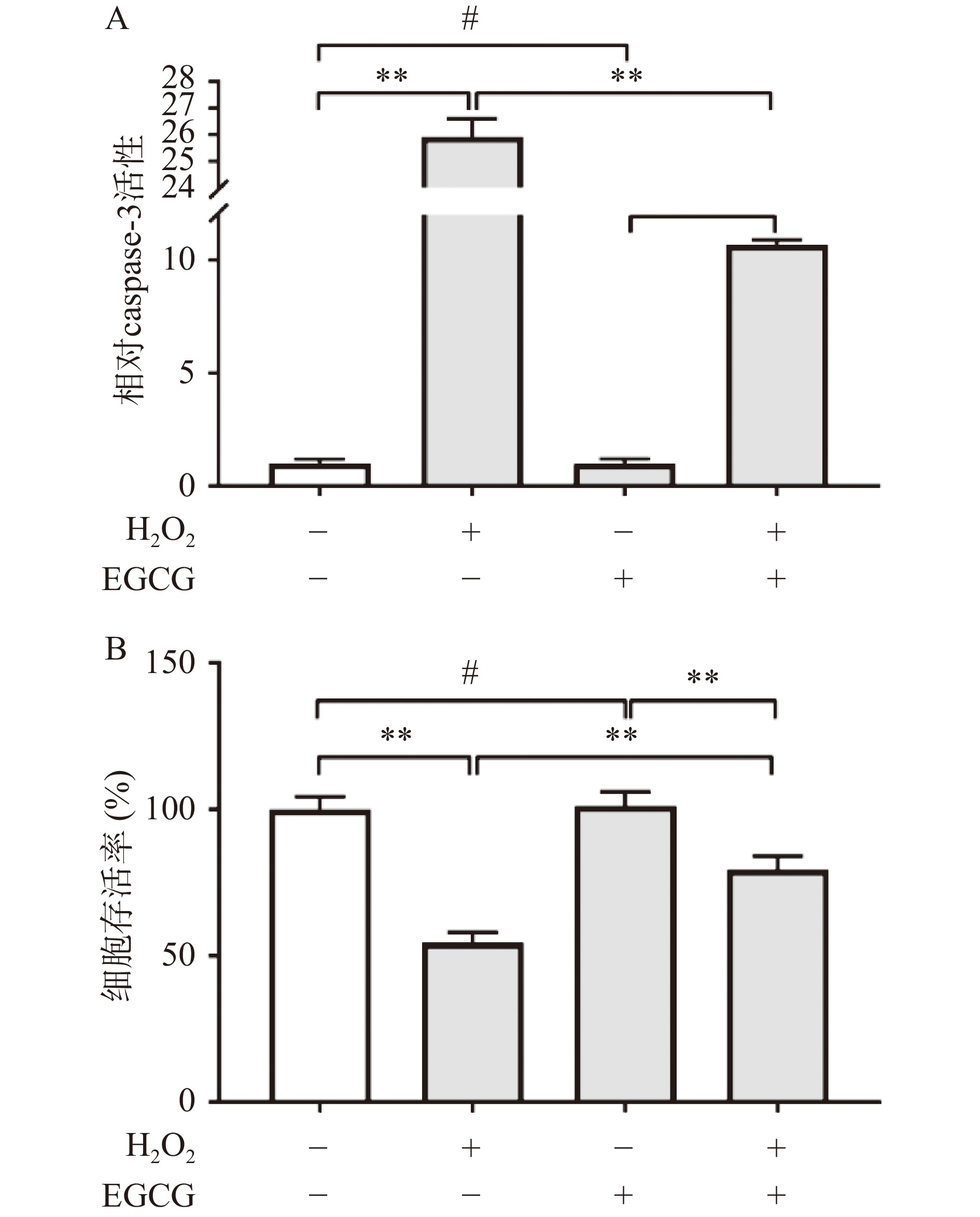
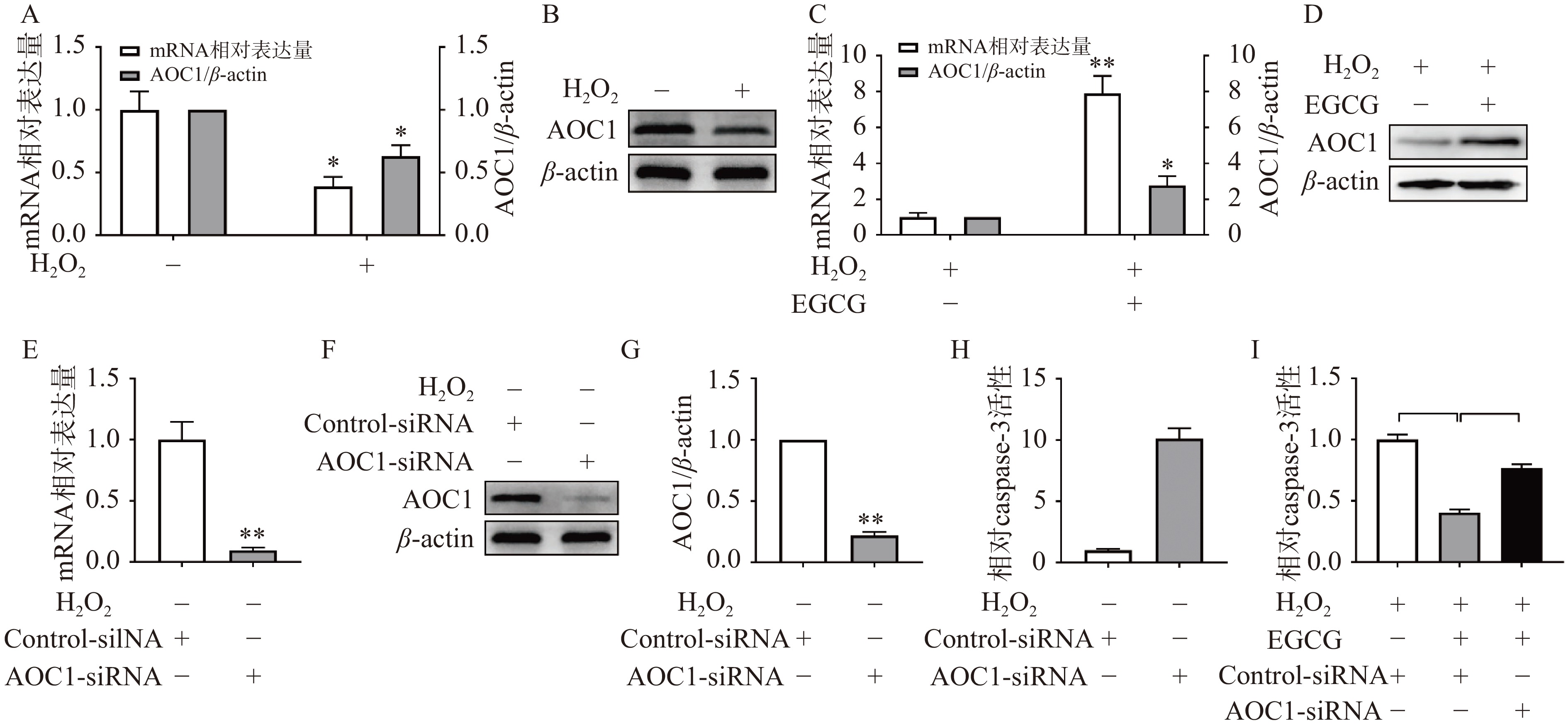
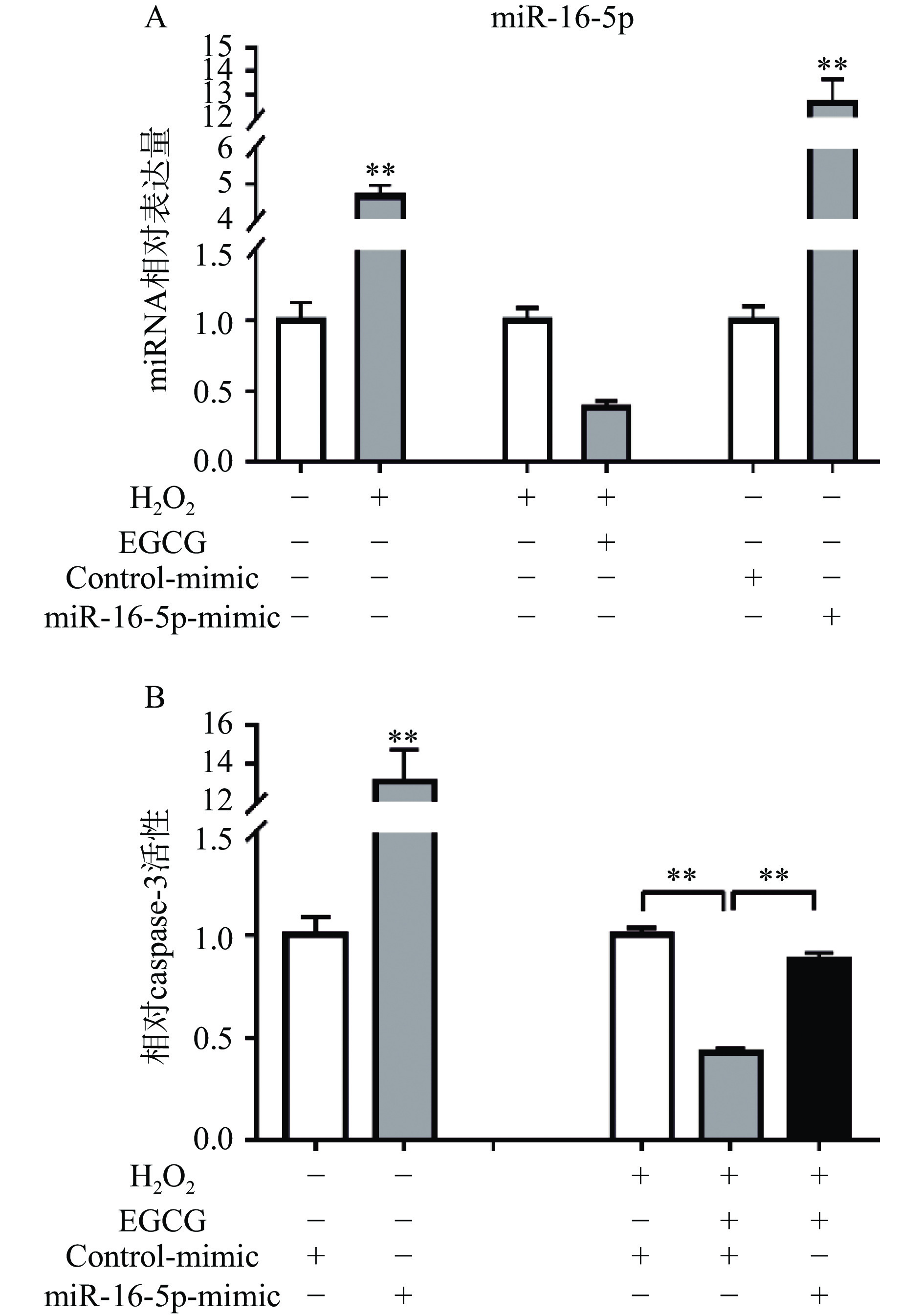
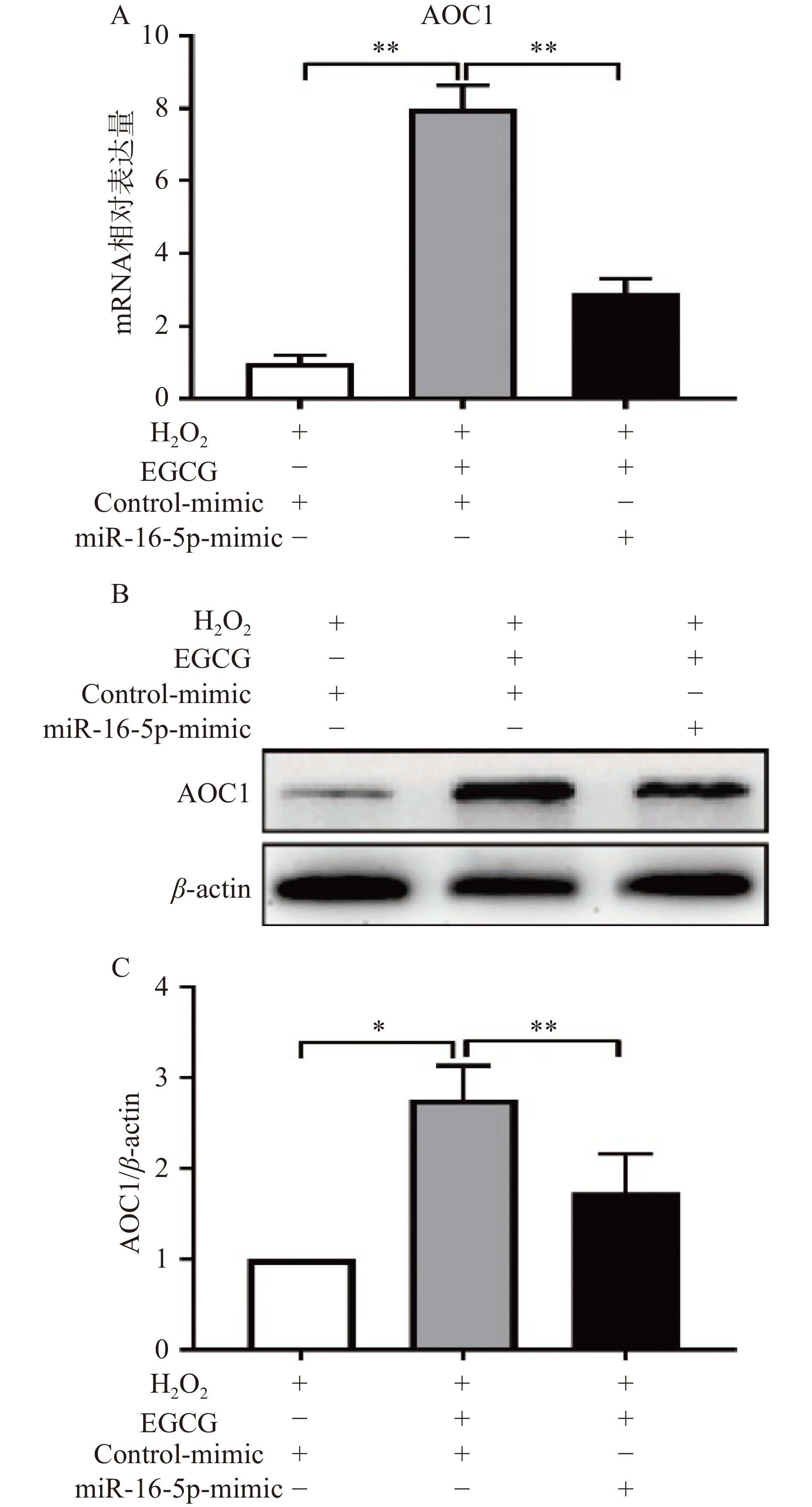
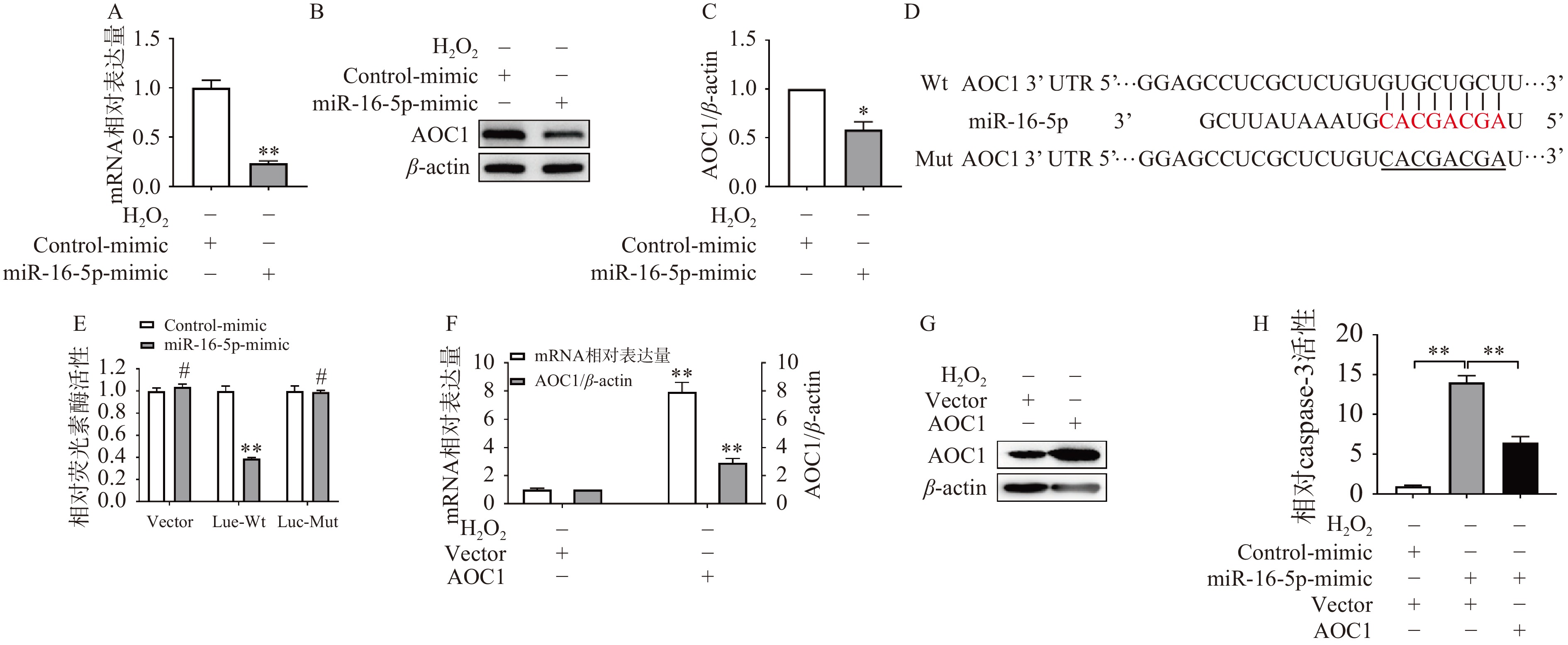

 下载:
下载:



